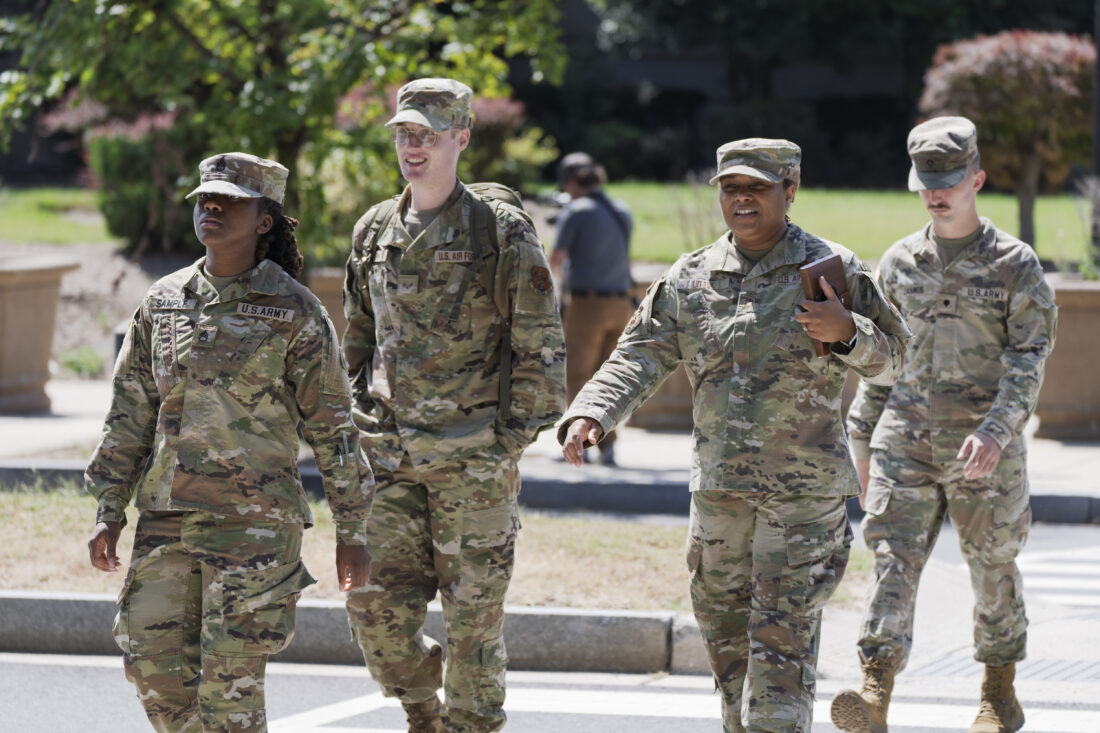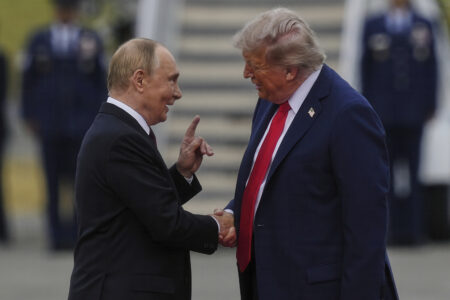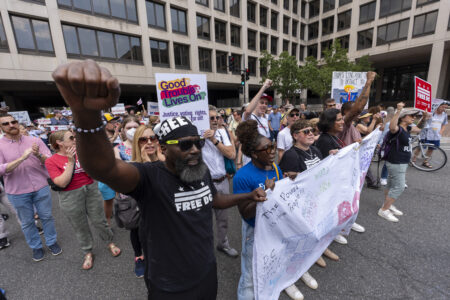National Guard troops arrive in Washington

Troops depart the District of Columbia National Guard Headquarters as President Donald Trump implements his order to use federal law enforcement and the National Guard to expel homeless people and rid the nation's capital of violent crime, in Washington, Tuesday. (AP Photo/J. Scott Applewhite)
WASHINGTON (AP) — The new picture of law enforcement in the nation’s capital began taking shape Tuesday as some of the 800 National Guard members deployed by the Trump administration began arriving. The city’s police and federal officials, projecting cooperation, took the first steps in an uneasy partnership to reduce crime in what President Donald Trump called — without substantiation — a lawless city.
The influx came the morning after the Republican president announced he would be activating the guard members and taking over the District’s police department, something the law allows him to do temporarily. He cited a crime emergency — but referred to the same crime that city officials stress is already falling noticeably.
Mayor Muriel Bowser pledged to work alongside the federal officials Trump has tasked with overseeing the city’s law enforcement, while insisting the police chief remained in charge of the department and its officers.
“How we got here or what we think about the circumstances — right now we have more police, and we want to make sure we use them,” she told reporters.
The tone was a shift from the day before, when Bowser said Trump’s plan to take over the Metropolitan Police Department and call in the National Guard was not a productive step and argued his perceived state of emergency simply doesn’t match the declining crime numbers. Still, the law gives the federal government more sway over the capital city than in U.S. states, and Bowser said her administration’s ability to push back is limited.
Attorney General Pam Bondi posted on social media that the meeting was productive.
The law allows Trump to take over the D.C. police for up to 30 days, though White House press secretary Karoline Leavitt suggested it could last longer as authorities later “reevaluate and reassess.” Extending federal control past that time would require Congressional approval, something likely tough to achieve in the face of Democratic resistance.
About 850 officers and agents fanned out across Washington on Monday and arrested 23 people overnight, Leavitt said. The charges, she said, included homicide, drunk driving, gun and drug crimes and subway fare evasion. She didn’t immediately provide further information on the arrests.
The U.S. Park Police has also removed 70 homeless encampments over the last five months, she said. People who were living in them can leave, go to a homeless shelter or go into drug addiction treatment, Leavitt said. Those who refuse could face fines or jail time.
The city and Trump have had a bumpy relationship
While Trump invokes his plan by saying that “we’re going to take our capital back,” Bowser and the MPD maintain that violent crime overall in Washington has decreased to a 30-year low after a sharp rise in 2023. Carjackings, for example, dropped about 50% in 2024 and are down again this year. More than half of those arrested, however, are juveniles, and the extent of those punishments is a point of contention for the Trump administration.
Resident Jeraod Tyre, who’s lived in Washington for 15 years, said he does see crime slowing down. He’s wary of the National Guard troops, who don’t have the same local knowledge as the city’s regular police force. “I feel safe walking through the city each and every day. The police are doing a mighty fine job,” he said.
Bowser, a Democrat, spent much of Trump’s first term in office openly sparring with the Republican president. She fended off his initial plans for a military parade through the streets and stood in public opposition when he called in a multi-agency flood of federal law enforcement to confront anti-police brutality protesters in summer 2020. She later had the words “Black Lives Matter” painted in giant yellow letters on the street about a block from the White House.
In Trump’s second term, backed by Republican control of both houses of Congress, Bowser has walked a public tightrope for months, emphasizing common ground with the Trump administration on issues such as the successful effort to bring the NFL’s Washington Commanders back to the District of Columbia.
She watched with open concern for the city streets as Trump finally got his military parade this summer. Her decision to dismantle Black Lives Matter Plaza earlier this year served as a neat metaphor for just how much the power dynamics between the two executives had evolved.
Now that fraught relationship enters uncharted territory as Trump has followed through on months of what many D.C. officials had quietly hoped were empty threats. The new standoff has cast Bowser in a sympathetic light, even among her longtime critics. “It’s a power play and we’re an easy target,” said Clinique Chapman, CEO of the D.C. Justice Lab and frequent Bowser critic.




